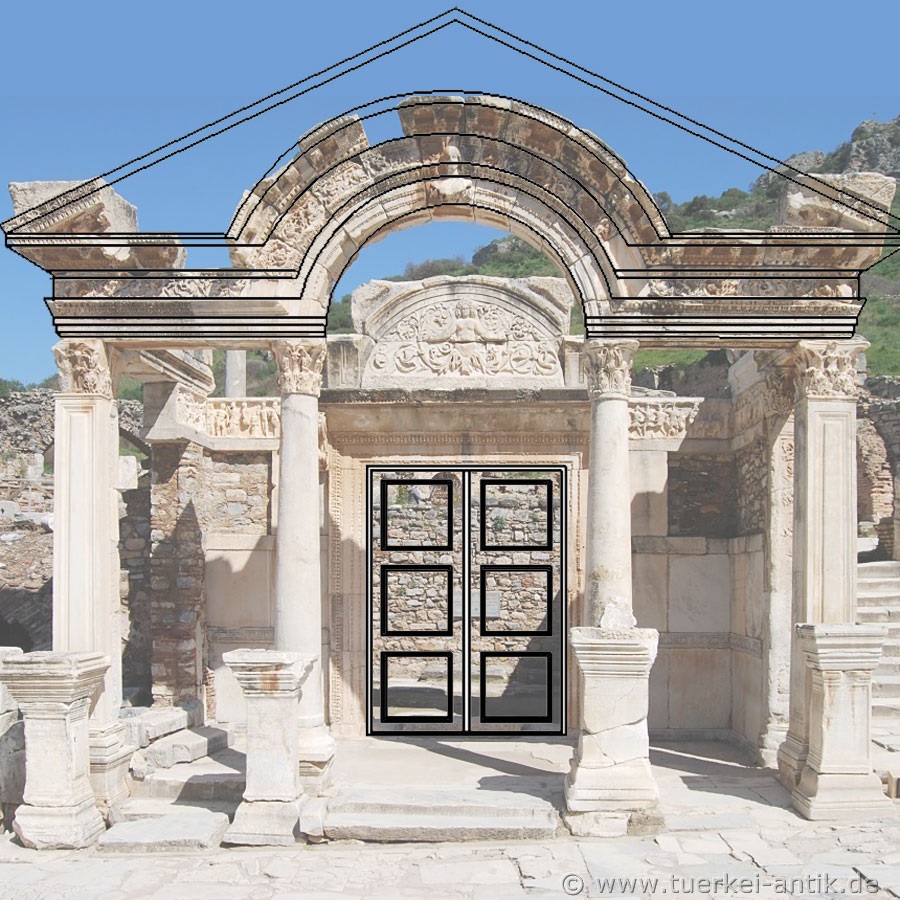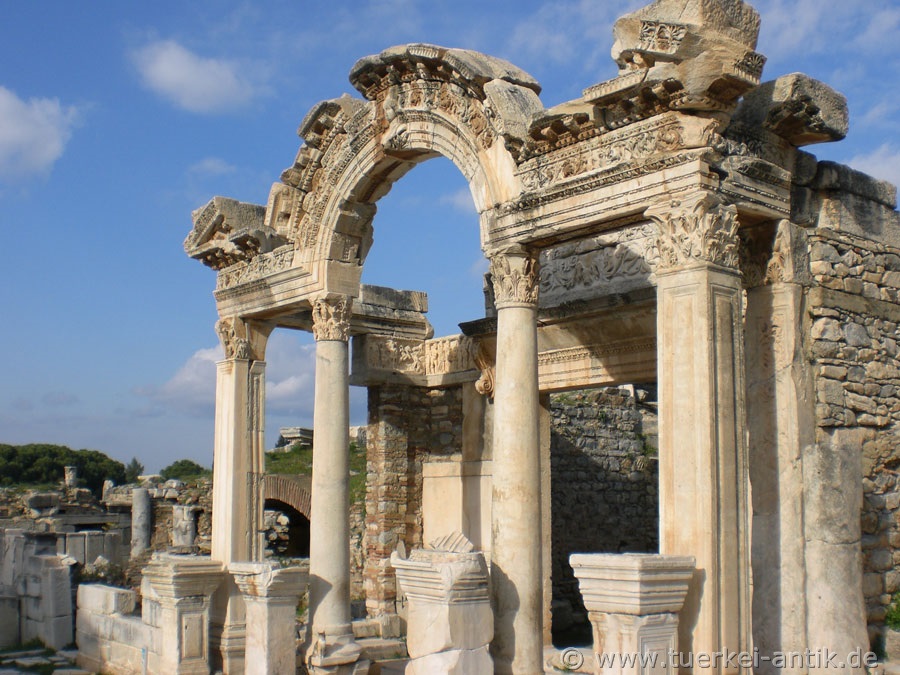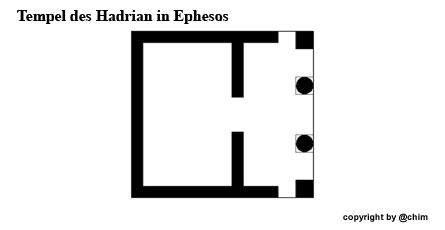|
The building, which is located directly on the
main road, is partially integrated into the Scholastikia thermal baths behind it. The ground plan of the temple corresponds to a four-column prostylos. In front of the only small, transversely rectangular Cella, in which probably a statue of the emperor stood, there is a generous vestibule, whose facade is divided by two columns and two pillars with Corinthian capitals.
These originally carried a triangular gable. In front of the columns and pillars stand four inscribed pedestals of statues of the emperors Diocletian, Constantius Chlorus, Galerius and Maximian. The statue of Maximian was later replaced by a statue of Theodosius I's father.
A Syrian arch was spanned over the two central columns, the keystone of which is highlighted by a bust of the Tyche. The architrave is decorated with a frieze of acanthus leaves and other plant motifs. The interior of the vestibule is characterised by a surrounding frieze. The original is in the Selšuk Museum.
The frieze on the left shows the founding myth of Ephesus with Androklos hunting boars, gods and Amazons, the latter among others at a Dionysus festival. The right part of the frieze differs stylistically from the rest. It is believed that it was transferred here from another building during reconstruction after the earthquake in the 4th century. |
|
|
Publius Aelius Hadrianus was the fourteenth Roman emperor. He reigned from 117 until his death on 10 July 138. Hadrian, like his extensive relative and imperial predecessor Trajan, was at home in Hispania. As ruler he made intensive efforts to consolidate the unity of the Roman Empire, which he visited extensively in large parts.
Through grants and administrative measures at the level of the Roman provinces and cities, he promoted prosperity and strengthened the infrastructure. As he fought only a few wars, his reign was an epoch of peace for most of the empire.
He renounced conquests and gave up the territories won by Trajan in the Parthian War, thus making a sharp and controversial change of course. In the military sphere, he concentrated his efforts on an efficient organization of the imperial defence.
His border fortifications, including Hadrian's Wall, named after him, served this purpose in particular.
His reign, however, was overshadowed by his tense relationship with the Senate, in which he had many bitter enemies.
Hadrian was interested in many things and ambitious in testing his talents. He held Greek culture in high esteem, in particular the city of Athens, famous as the classical centre of Greek education, which he promoted through intensive building activity alongside many other cities.
During his reign he built important buildings such as the library in Athens, the Pantheon and the Angel Castle in Rome as well as the Hadrian's Villa near Tivoli. |
|






